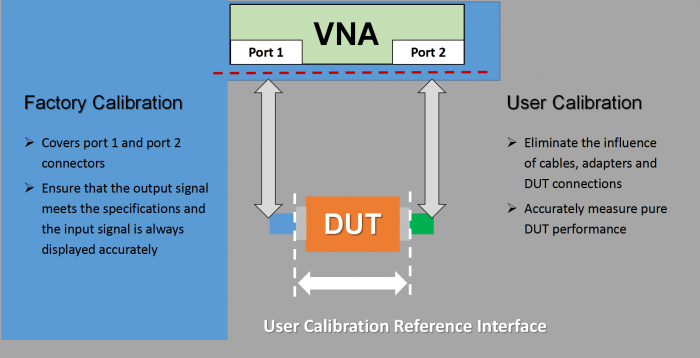Measurement calibration of Vector Network Analyzer (VNA) is a process to determine the system errors according to the standards of the existing measurement characteristics and then eliminate the influence of system errors during measurement of the tested device. It can help to reduce the measurement error and improve the measurement accuracy of the analyzer. Therefore, the VNAsetting must be calibrated regularly.
Fig.1 VNA calibration schematic diagram
There are three main types of instrument errors: systematic error, random error and drift error.
1. Systematic error
• Test equipment or test setup is not ideal.
• Generally it is predictable.
• It can be easily eliminated through user calibration.
• Examples:
− The output power changes
− Ripple in the frequency response of a VNA receiver
− The power loss of the RF cable connecting the DUT to the VNA
2. Random error
• The error caused by the noise emitted by the test equipment or test setup and it will change over time.
• Determines the accuracy that can be achieved in the measurement.
• The error cannot be eliminated by user calibration.
• Example:
− Trajectory noise
3. Drift error
• Measurement drifts and changes that occur over time in test equipment and test settings after user calibration.
• The amount of drift of the test setup over time determines how often the test setup needs to be recalibrated.
• Examples:
− Temperature changes
− Humidity changes
− Set mechanical movements




